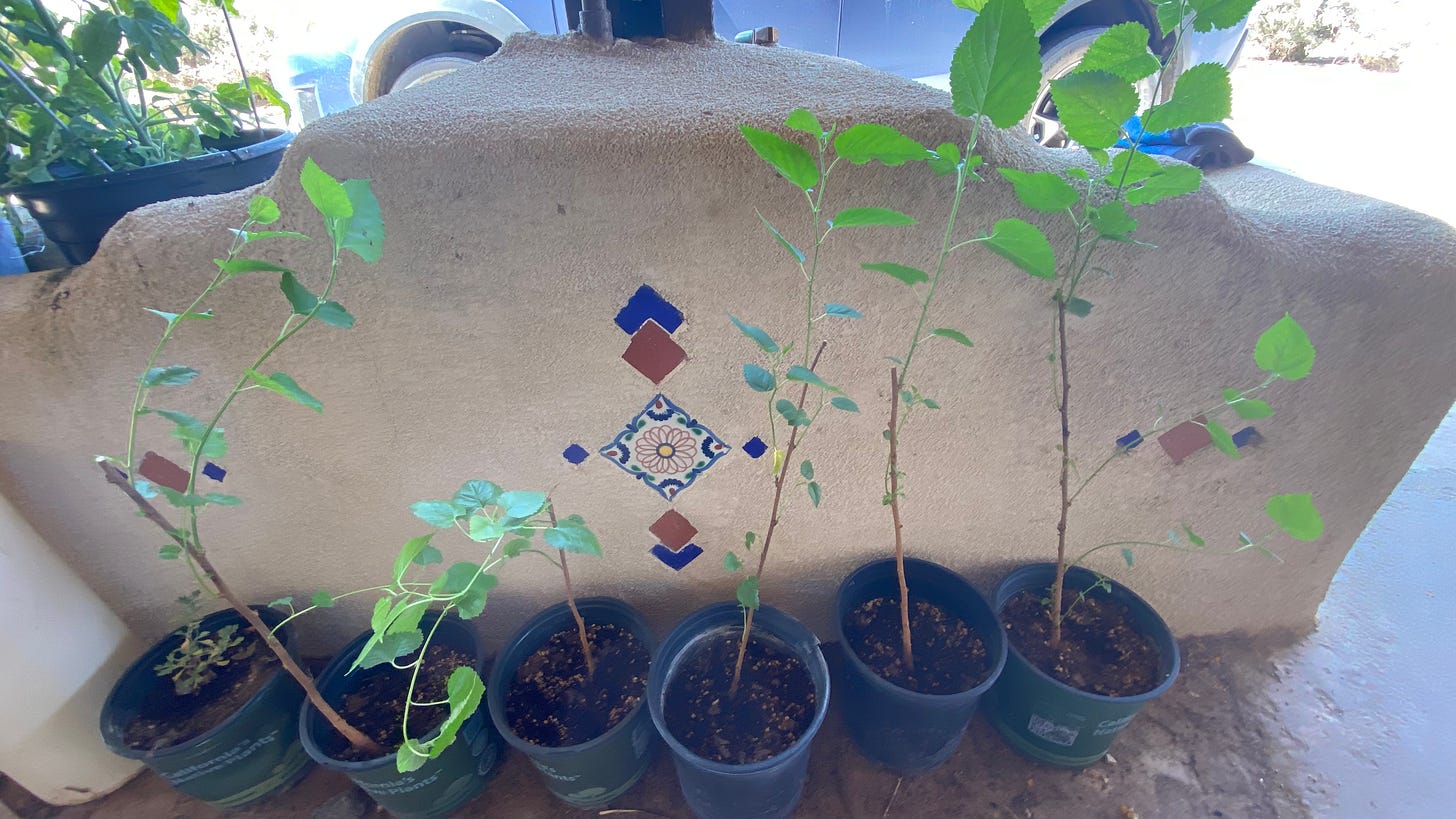Before I launch into it, you may be interested to check out the two episodes of the 90 Miles from Needles desert protection podcast that have come out since the last Letter From the Desert. They feature conversations with Davina Smith of the Bears Ears Inter-Tribal Coalition, and with Parker Lloyd of the Nature Center at Pia Okwai in South Salt Lake. Both episodes are a trifle upbeat despite the overwhelming notupbeatness of the world in general.
Also: I just agreed to take on the challenge of editing the Desert Report, a publication of the Sierra Club’s California/Nevada Desert Committee that’s been in business since July 1997. I found the Desert Report absolutely indispensable when I first moved to the desert, and I hope to keep it that way. You can subscribe to either the digital or print version, for free. Although if you can donate a bit, you should.
The Desert Report editor gig is not going to be full-time gig — maybe more like .15 FTE — and there are synergies to be had with putting out each issue and doing the podcast and this newsletter, so it seems like a good fit.
Lastly: I’m trying to raise about $700 to get the podcast to the Chihuahuan Desert Fiesta, an educational event in El Paso on September 27. If you’re so inclined, you can kick in some spare change here.
While I was in Utah, a package arrived at home with some precious living things in it: five rooted cuttings of red mulberry, a tree native to eastern North America that will nonetheless do quite well in the Mojave Desert if given a little supplemental water during the hottest part of the summer. La mujer que amo rescued them from the cardboard shipping box in the sun-scorched driveway and put them in water on the kitchen table to keep them alive until I got home. When I did, I put each cutting in its own one-gallon pot, just so:
As you can see, they leafed out nicely as soon as their roots touched soil.
(You can probably also see that there are six one-gallon pots in the photo. The left-most one holds a Purshia seedling, which a very kind person in Utah gave me to bring home to La mujer que amo. It has doubled in size since I got it home.)
Those of you who are as native-plant obsessed as I am might wonder why I am putting East Coast trees in the ground in the Mojave Desert. I do have a few reasons:
They are not invasive here by any account I’ve found.
At a certain point, not too many summers away, they will provide much-desired shade. Then in the winter, when shade is less important, they lose their leaves and let the warming sun in.
Those fallen leaves make excellent compost.
Before they fall, the leaves are edible and nutritious, with loads of iron, calcium and magnesium, and there are a few studies that indicate the leaves may help regulate blood sugar, serum cholesterol, and blood pressure, though of course more study is needed.
Regardless of any putative health benefits for humans, desert tortoises love to eat mulberry leaves, and growing the trees may entice my tortoise-fostering friends to come visit with empty bushel baskets.
Birds and other animals like the fruit. Birds are not doing great in the Mojave these days, and offering up a few trees full of sugary, watery berries seems like a good thing to do. Plus this will help make the gravel in our yard more interesting, with random purple splotches to complement the tan.
Pie. Nuff said.
I may put a couple of them in the south part of the yard, which once held our towering honey mesquite until it fell over a year ago. At some point, that summer shade will be exceptionally welcome on our house, not to mention our solar system’s battery.
Those of you who have been reading Letters From the Desert for a while might remember that when we first moved in, during the first weeks of the pandemic, I planted a three-inch-tall Mission fig tree withthe grndiose hope that before long I could sit in its shade and gorge myself on its fruit. That day has not yet arrived. The fig tree is healthy in most respects, but we have had unanticipated problems with a pest organism that has eaten whole sections of the tree. It wasn’t until I caught this pest in the act of eating an entire fig tree branch that I learned who she was, and that she jumps into bed with me every night.
I would have thought the gooey, latexy sap in fresh fig wood would have been a disincentive, but this is a dog who happily chews on bougainvillea stems covered in inch-long thorns.
So when the mulberries go in the ground, they will be armored in chicken wire.






Just contributed in honor of Jean Ossorio sticking with me through 60 years of marriage. When you come to El Paso, don't forget las Cruces and our Organ Mountains-Desert Peaks Nat'l Monument
Thanks Chris. Please give me as much notice as possible. I'd really like to get together.